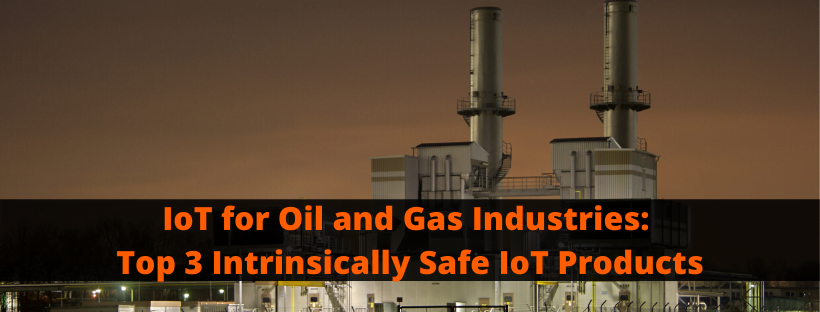The person who invented the phrase, ‘if it ain’t broke, don’t fix it’ never foresaw the digital era. In the current internet age, innovation is king, change is inevitable, and those who fail to adapt will lose. Consequently, different industries are turning to technology to stay competitive in the increasingly competitive business world.

From healthcare to manufacturing and oil and gas, numerous industries have discovered the potential to smoothen their operations by using the Internet of Things (IoT). Specifically, industry leaders are leveraging IoT to attain greater efficiency and cost savings. According to 451 Research, the number one use of IoT in the oil and gas sector is supply chain optimization. Additionally, other IoT uses in the industry include production prediction, preventative maintenance, and workload optimization.
Research shows that in 2018 the global IoT market was $190 billion. And later, the market is forecasted to hit the one trillion dollar mark in 2026. By 2023, the global IoT in the oil and gas market will be $39.40 billion. This growth will emanate from the deployment of automation and control and sensing systems in the industry. Also, the use of intrinsically safe IoT products will contribute significantly to this growth.
How IoT Benefits Oil and Gas Companies

Oil and gas enterprises have a plethora of opportunities to employ IoT for production and equipment optimization. IoT has numerous benefits for these facilities, including:
· Cuts to Operating Costs:
IoT enables facilities to discover patterns in usage and hence optimize resources. Accordingly, a company reduces its costs and increases profitability.
· Increased Productivity
IoT offers a way to maximize the production and equipment process of extracting oil and gas; hence, boosting productivity. Research shows that IoT utilization can enhance production by 6-8%.
· Facilitated & Data-driven Decision-Making
IoT devices provide precise real-time data that can inform decisions on research, refining, and logistics. Sensors, for instance, offer valuable data to alert about potentially dangerous scenarios and promote predictive analysis.
· Waste Reduction
IoT technologies help the oil and gas sector to reduce waste and thus become more environmentally friendly. It lessens cases of leakage and equipment damage.
· Improved Risk Mitigation
Among the biggest problems for oil and gas companies is maintaining complicated and costly equipment. Oil and gas extraction requires the use of heavy machinery and advanced technologies. Nevertheless, with IoT, companies can manage even the most innovative engineering equipment remotely. IoT can also prevent equipment malfunction and minimize downtime.
· Increased Employee Safety
Oil and gas industry employees work in some of the most dangerous conditions and are vulnerable to accidents and injury. IoT eliminates the human factor in many aspects of gas and oil operations. Therefore, it increases employee safety and reduces the prevalence of accidents.
Intrinsically Safe IoT Products for Oil and Gas Industry

1. Intrinsically Safe CCTV Cameras
Individuals and businesses have been using security cameras for decades. In gas and oil facilities, intrinsically safe CCTV cameras are invaluable. While many sites are located in remotely inaccessible places and open seas, they are still targets for trespassing, vandalism, theft, and even terrorist attacks. Also, they are flammable, toxic, and corrosive environments. Therefore, CCTV cameras can provide adequate security to ensure the safety of personnel, expensive infrastructure, and production processes that facilities require.
CCTV cameras allow facilities to monitor their critical points of business from entrances, refineries, and wells. They act as a virtual pair of eyes for their facilities as well as deter theft. Moreover, CCTV cameras intercept risks, suspicious activities, and accidents promptly.
These cameras monitor delicate production operations held in environments filled with toxic fumes and high temperatures that are unideal for humans. Thus, cameras in and around potentially hazardous areas are more important than ever. Explosion-proof cameras can avert an explosion, keeping your facility and workers safe while offering all of its security benefits.
2. Intrinsically Safe Sensors
Nowadays, sensors are everywhere – in homes, hospitals, shopping malls, and workplaces. They are a vital part of IoT, and almost all IoT technologies use sensors. In a nutshell, sensors identify and respond to changes in an environment. Gas and oil facilities can use sensors for different purposes, including the below.
- Access data on different variables – be it humidity, motion, or temperature. Connected devices can share data to elicit various actions.
- Inspect the condition of pumps, filters, wellheads, and other pipeline elements. Also, they assess the performance of above-ground pumps.
- Monitor inventory levels.
- Track tanker fleets in real-time. Sensors can track the location of tankers and their state to increase the efficiency and security of transporting oil and gas products.
- Sensors can assist in supply chain management. They can alert refineries about the products that are in the delivery process. Similarly, sensors can notify distributors when their clients’ oil and gas are running out.
- Sensors can help identify potential problems before they escalate. Then, facilities can carry out predictive maintenance and avoid more significant problems in the future.
- Gas sensors can be used to detect hazardous gases in facilities.
- Sensors can offer data to be analyzed into trends to enable evidence-based decision-making. Additionally, sensors can collect terabytes of data from production sites that can provide valuable insights.
3. Intrinsically Safe RFID Devices
Radio Frequency Identification (RFID) devices are tagged in objects to aid in automated identification. Industries like automation, manufacturing, medical science, and telecommunications often use these devices. In other words, RFID devices have transformed the oil and gas industry. They have produced positive outcomes for improving operational efficiency, increasing productivity, and enhancing the safety of workers and equipment.
How do gas and oil industries use RFID? Here’s how.
- In the production of crude oil and gas, RFID readers are attached to drilling pipes to measure the depth of oil and determine pipe health. Also, they offer data related to underground temperature, mud composition, flow rate velocity, and stress.
- In the maintenance of equipment and units, RFID tags ensure that equipment like pipelines are working optimally. They detect leaking pipes and other damaged equipment that could result in loss of oil and endanger marine life.
- To ensure the safety and security of workers, RFID tags combined with GPS technology help trace and rescue workers in the event of an accident. Also, they are used to detect unauthorized people in a facility and determine the number of people entering a facility.
- To simplify the administration process. RFID badges allow gas and oil companies to track daily employee attendance, timing, and activity logs.
Bottom Line
The oil and gas industry is among the top sectors that have embraced IoT. IoT helps oil and gas organizations optimize the production process, increase revenue while reducing expenses, avoid accidents and disruptions, and beat the competition. Although there are numerous IoT technologies that facilities can use, this article outlines three of the safest. Contact us today for intrinsically safe IoT products to meet your business needs.


